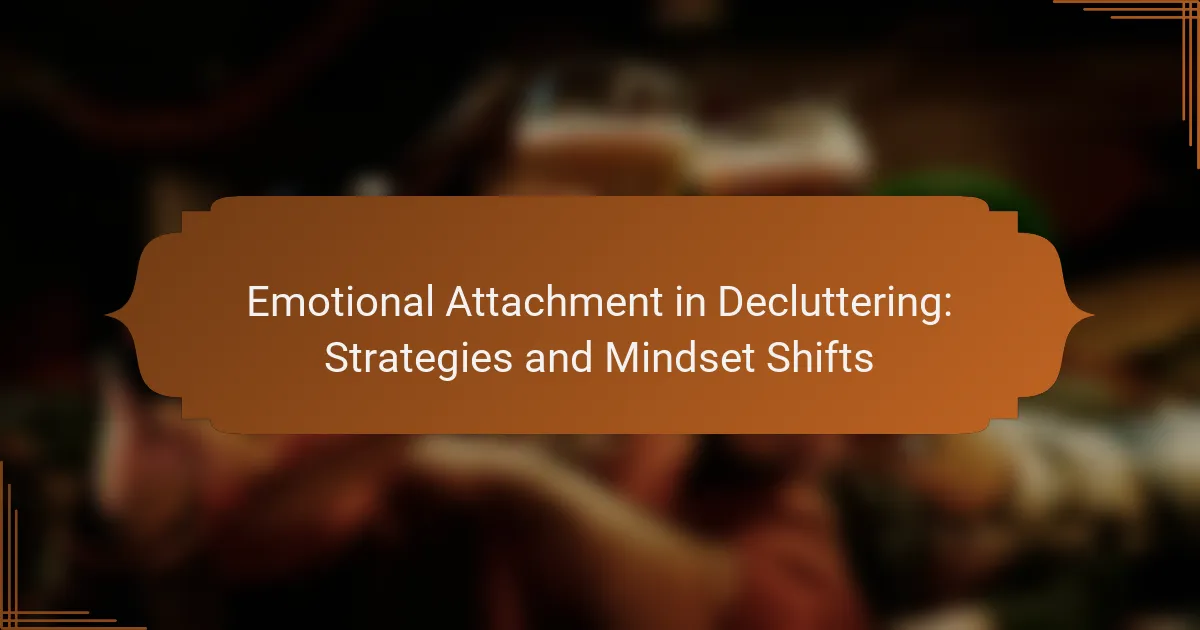Decluttering can be a challenging process, especially when emotional attachments to belongings come into play. By recognizing these feelings and adopting specific mindset shifts, you can learn to let go of items that no longer serve you, ultimately creating a more organized and peaceful living space. Implementing effective strategies will help you break the task into manageable parts, keeping you motivated and focused throughout the journey.
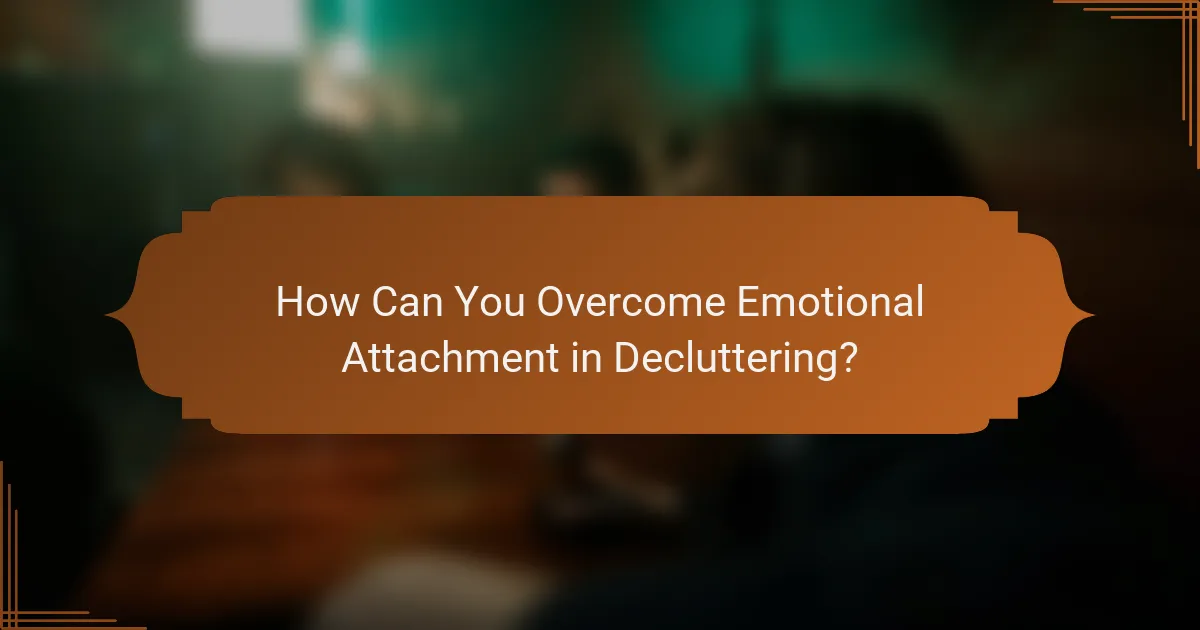
How Can You Overcome Emotional Attachment in Decluttering?
Overcoming emotional attachment in decluttering involves recognizing the feelings tied to your belongings and implementing strategies to let go. By understanding the significance of items and shifting your mindset, you can create a more organized and peaceful living space.
Identify sentimental items
Start by identifying items that hold sentimental value. These may include gifts, family heirlooms, or items linked to significant life events. Acknowledge their importance but assess whether they contribute positively to your current life.
Consider creating a designated space for truly cherished items. This can help you appreciate them without cluttering your environment. Limit the number of sentimental items to avoid emotional overwhelm.
Practice gratitude
Practicing gratitude can shift your perspective on your belongings. Instead of focusing on what you might lose by letting go, reflect on the joy and memories the items have brought you. This mindset can ease the emotional burden of decluttering.
Keep a gratitude journal where you note the positive experiences associated with each item before deciding its fate. This can help you feel more at peace with your decisions.
Set clear goals
Establish clear decluttering goals to guide your process. Determine what you want to achieve, whether it’s creating a more functional space or reducing the number of items in your home. Specific goals can provide motivation and direction.
Break your goals into manageable steps, such as tackling one room or category at a time. This approach can prevent feelings of being overwhelmed and help you stay focused.
Visualize a clutter-free space
Visualizing a clutter-free space can motivate you to declutter. Imagine how your home will look and feel once you remove unnecessary items. This mental image can serve as a powerful reminder of the benefits of letting go.
Consider creating a vision board with images of organized spaces that inspire you. Refer to this board during your decluttering process to maintain focus and enthusiasm.
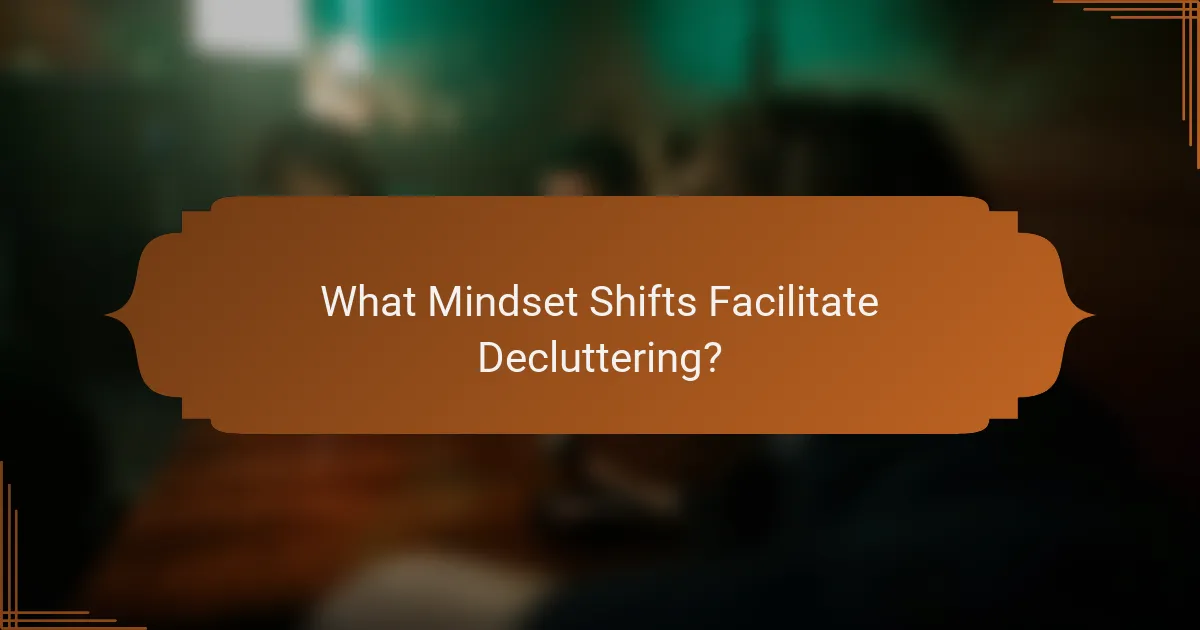
What Mindset Shifts Facilitate Decluttering?
To effectively declutter, adopting specific mindset shifts can significantly ease the process. These shifts help individuals let go of emotional attachments and prioritize what truly matters in their living spaces.
Adopt a minimalist mindset
A minimalist mindset encourages focusing on quality over quantity. This involves evaluating items based on their utility and emotional value rather than their mere presence in your home. Consider keeping only those possessions that serve a purpose or bring joy.
Start by setting limits on the number of similar items you own, such as books or clothing. For instance, you might decide to keep only ten favorite books or five pairs of shoes. This creates a more intentional living space and reduces clutter.
Embrace impermanence
Understanding that everything is temporary can help in letting go of items that no longer serve you. Embracing impermanence allows you to appreciate the moment without clinging to material possessions. Recognize that change is a natural part of life.
When faced with the decision to keep or discard an item, ask yourself if it still aligns with your current lifestyle. If it doesn’t, consider that its time has passed, and it may be better suited for someone else who can use it now.
Focus on functionality
Focusing on functionality means prioritizing items that enhance your daily life. Assess each possession based on how well it meets your needs and contributes to your routines. This practical approach helps eliminate unnecessary clutter.
Make a checklist of essential items for each room, such as kitchen tools or office supplies. If an item does not serve a clear function or improve your efficiency, it may be time to let it go. This strategy not only simplifies your space but also streamlines your daily activities.
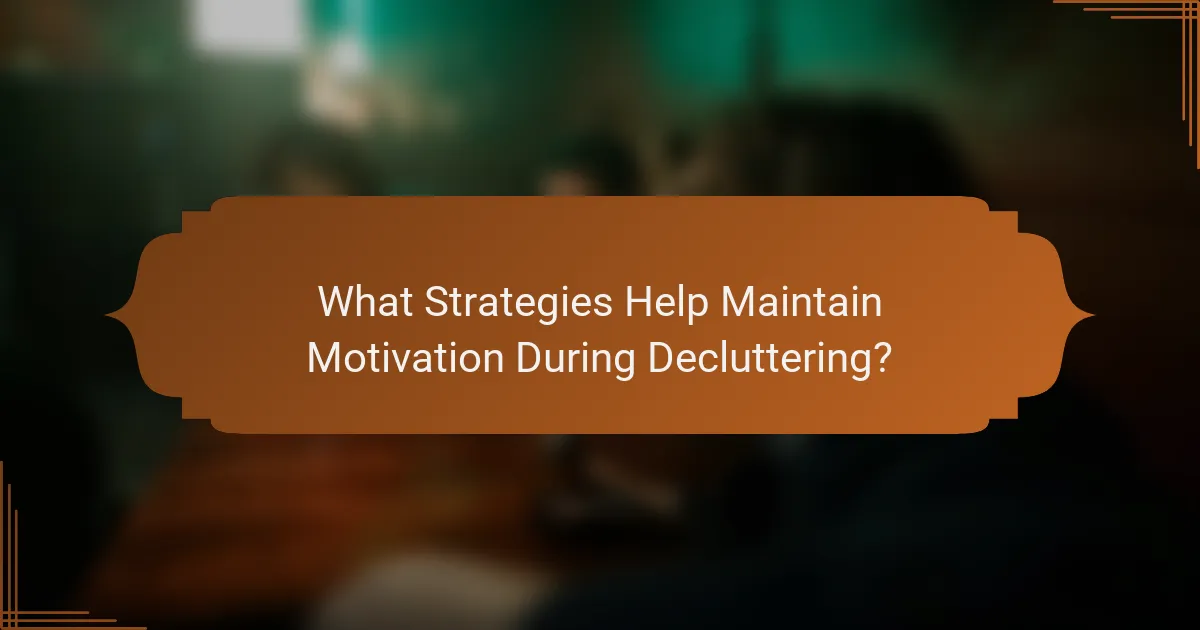
What Strategies Help Maintain Motivation During Decluttering?
To maintain motivation during decluttering, it’s essential to implement effective strategies that break the process into manageable parts and create a sense of accomplishment. These techniques can help you stay focused and engaged, making the task feel less overwhelming.
Break tasks into smaller steps
Dividing decluttering into smaller, achievable tasks can significantly enhance motivation. Instead of aiming to declutter an entire room, focus on one drawer or a specific area, such as a shelf. This approach allows for quick wins, which can boost your morale and encourage continued progress.
Consider creating a checklist of small tasks. For example, list items like “clear out the top shelf” or “sort through shoes.” Completing each task provides a sense of accomplishment and makes the overall process feel less daunting.
Use a timer for focused sessions
Setting a timer can create a sense of urgency and help maintain focus during decluttering. Try using the Pomodoro Technique, where you work for 25 minutes and then take a 5-minute break. This method can keep your energy levels high and prevent burnout.
During your focused sessions, aim to tackle one specific area or category of items. For instance, dedicate one session to sorting through books or clothing. This structured approach can make the decluttering process more efficient and less overwhelming.
Reward yourself after decluttering
Incorporating rewards into your decluttering routine can motivate you to complete tasks. After finishing a specific area or reaching a decluttering goal, treat yourself to something enjoyable, like a favorite snack or a short break to watch a show.
Establishing a reward system can reinforce positive behavior. For example, if you declutter a room, plan a fun outing or purchase a small item you’ve wanted. This creates a positive association with the decluttering process, making it more likely you’ll continue to engage in it.

How Do You Decide What to Keep or Discard?
Deciding what to keep or discard during decluttering involves assessing the emotional attachment and practical value of each item. Focus on whether an item sparks joy or serves a useful purpose in your life.
Apply the Marie Kondo method
The Marie Kondo method emphasizes keeping items that “spark joy.” Begin by gathering all similar items in one place, such as clothes or books, and evaluate each piece individually. If an item does not evoke positive feelings, consider letting it go.
This approach encourages mindfulness and can transform your relationship with belongings. It’s not just about tidiness; it’s about surrounding yourself with things that enhance your life.
Use the one-year rule
The one-year rule suggests discarding items that you haven’t used in the past year. This timeframe helps identify items that may have sentimental value but no practical use. If you haven’t reached for it in a year, it’s likely you can live without it.
Exceptions can be made for seasonal items or those with significant emotional ties, but generally, this rule simplifies decision-making. Consider creating a box for items you’re unsure about and revisit it in a year.
Consider the item’s utility
Assessing an item’s utility involves evaluating how often and effectively you use it. Ask yourself if the item serves a clear purpose in your daily life or if it merely occupies space. Items that are functional and regularly used should be prioritized.
For example, kitchen gadgets that you use frequently should be kept, while duplicates or rarely used tools can be discarded. This practical approach helps maintain a clutter-free environment while ensuring you have what you need.
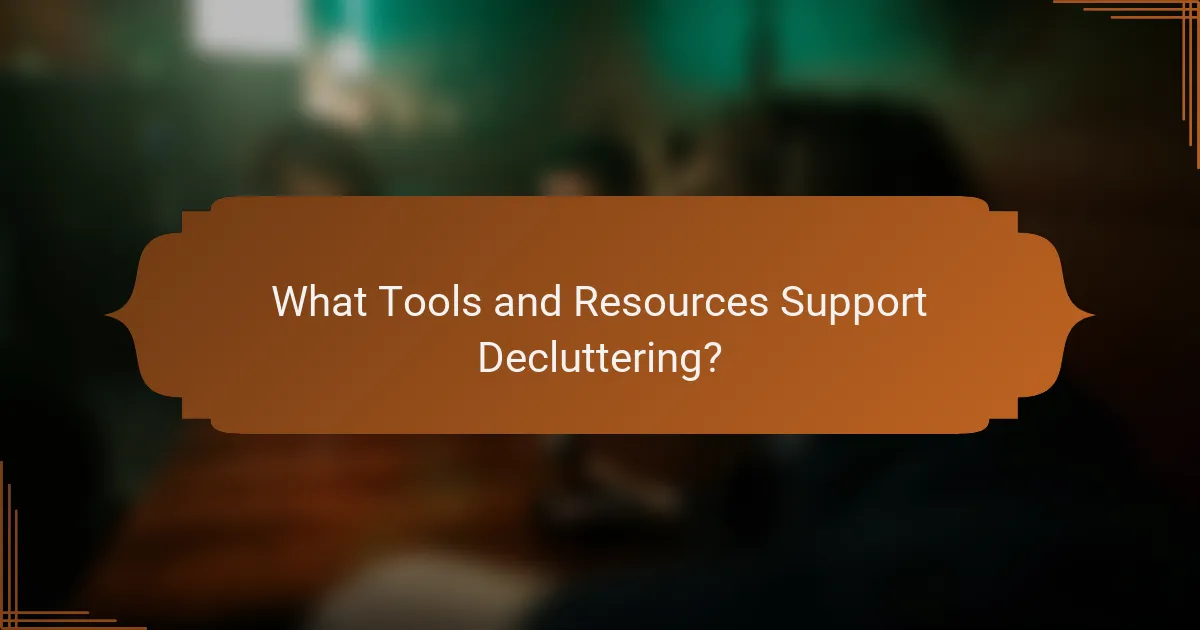
What Tools and Resources Support Decluttering?
Several tools and resources can significantly aid in the decluttering process, making it easier to manage emotional attachments and streamline possessions. These include digital apps, physical organizers, and community resources that provide guidance and support.
Decluttering apps like Clutterfree
Decluttering apps such as Clutterfree help users track their belongings and set goals for reducing clutter. These applications often feature user-friendly interfaces that allow you to categorize items, set reminders, and visualize progress over time.
When using Clutterfree, consider setting specific decluttering goals, such as reducing the number of items in a particular category or room. The app can help you stay accountable and motivated by providing insights into your decluttering habits.
Other popular decluttering apps include Marie Kondo’s KonMari app and Sortly, which also offer unique features tailored to different decluttering styles. Explore these options to find the one that best suits your needs and preferences.
